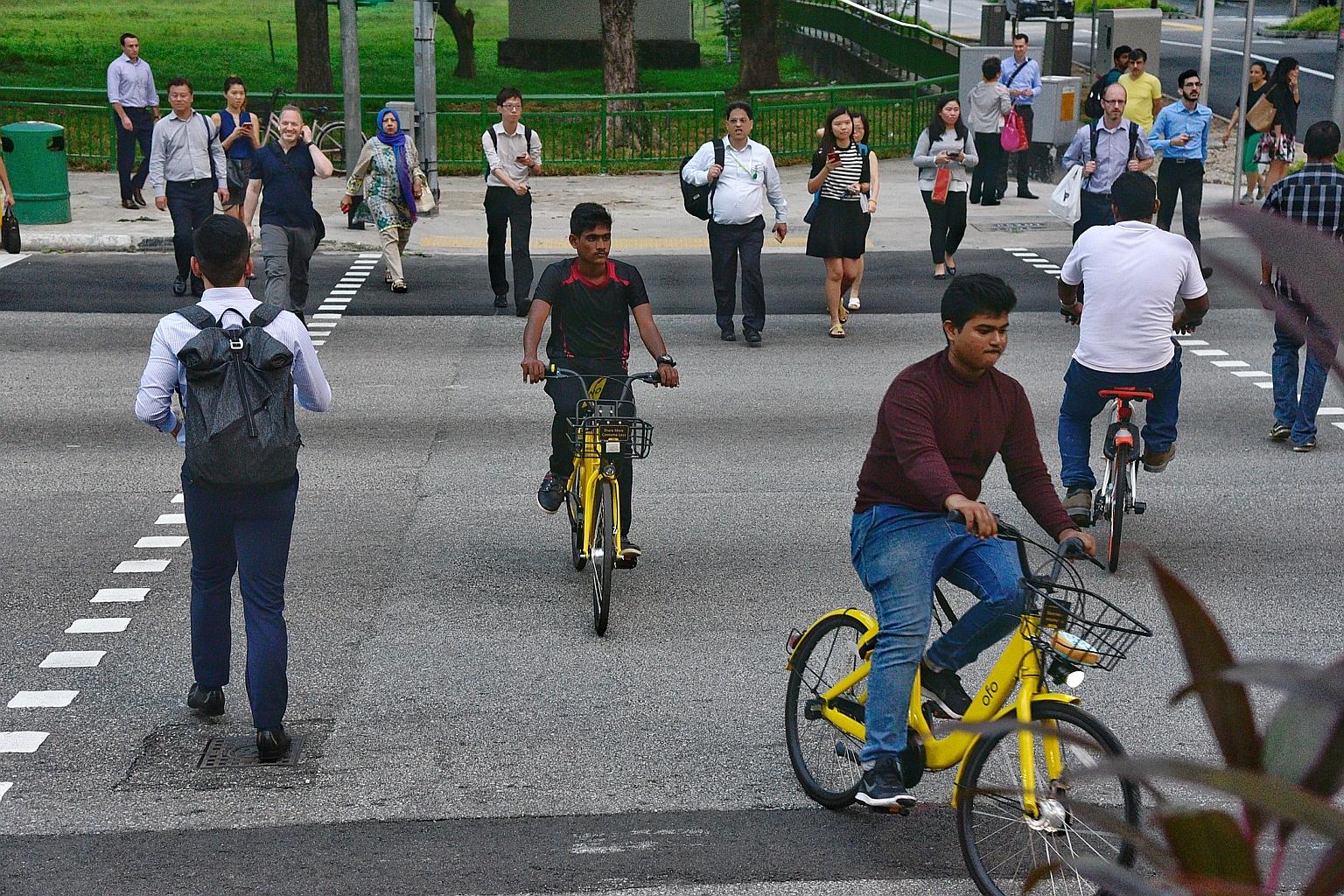Help At Your Fingertips
Stay injury-free on your hired ride
As bike-sharing picks up in Singapore, here's what you should do before pedalling off
Sign up now: Get ST's newsletters delivered to your inbox

A bicycle seat that has not been adjusted properly can result in pain in the lower back, knees or calves.
ST PHOTO: DESMOND WEE
Follow topic:
Cycling regularly is a great form of exercise to keep the weight off. It improves blood pressure and diabetes control, and enhances cardiovascular health.
As more and more bike-sharing firms set up shop here, there is little excuse not to take up this activity.
Just a year ago, when Singapore-based oBike started operations, it had about 1,000 bicycles. Today, it has 14,000. It has also expanded to 20 countries.
Apart from oBike, there's also Mobike, ofo, SGBike and GBikes.
But before you hop on a shared bike, here are some things to note, said Dr Dinesh Sirisena, a consultant in sports medicine at Khoo Teck Puat Hospital.
ADJUST THE SEAT TO AVOID PAIN
When seated, place your foot in the pedal at the lowest point of the pedal stroke and ensure that your knees are bent at a 25-degree angle.
If the bicycle saddle or seat is positioned too low, you may end up excessively bending your knees. You can develop tightness in areas such as the quadriceps or end up with pain in the front of your knees.
If the seat is too high, you may have to straighten your legs to pedal the bike. This could lead to an overarching of the lower back or pain in the calves. It is simply an inefficient cycling form.
Over time, you could develop chronic lower back pain, even though it may not be caused by any damage to the joints or nerves.
WATCH OUT FOR BRUISES AND SORES
If the seat is too small, it can result in bruising, pressure areas and sores on the buttocks, the perineum and, for men, on the scrotum too.
When a correctly fitted seat is combined with appropriate attire (that is, well-fitted cycling shorts), a rider can travel comfortably for several hours.
As with the seat size, correct positioning of the seat is essential. If it is tilted backwards, the front edge of the seat can put pressure on the perineum and injure this area.
Similarly, if the seat is tilted excessively forward, it can push the pelvis into a forward tilt, which will place pressure on your lower back, knees and forearms.
BE AWARE OF PRE-EXISTING CONDITIONS
The bikes that are for hire tend to be heavier than the ones you may own as the former have to be robust to withstand rough handling. Thus, more effort is needed to ride these bikes.
If the hired bikes have no gears, it would require even more effort to get going on them. This will work the heart harder.
If a rider has a pre-existing medical condition such as cardiac disease or a sports-related problem, the exertion might precipitate an acute episode of their symptoms.
STOP IF YOU EXPERIENCE JOINT PAIN
Some bikes have airless or solid tyres, which don't run the risk of becoming flat. They are more resistant to damage and can last longer than conventional tyres.
However, as airless tyres tend to be heavier and firmer than conventional tyres, the ride may not be as smooth.
Also, some riders who have less experience may find bikes with airless tyres harder to handle.
Beginners should use these bicycles for shorter routes and gradually build up the distance.
If you start to develop symptoms such as joint pain, switch to a bicycle with conventional tyres.
WEAR PROPER ATTIRE TO LIMIT INJURY
Wear clothing that enhances visibility, and protective equipment such as helmets and gloves.
Lightweight, breathable materials help maintain body temperature, while padded cycling shorts can reduce pressure on sensitive areas.
In case of a fall, proper attire will help to limit any injury suffered.
Joyce Teo

